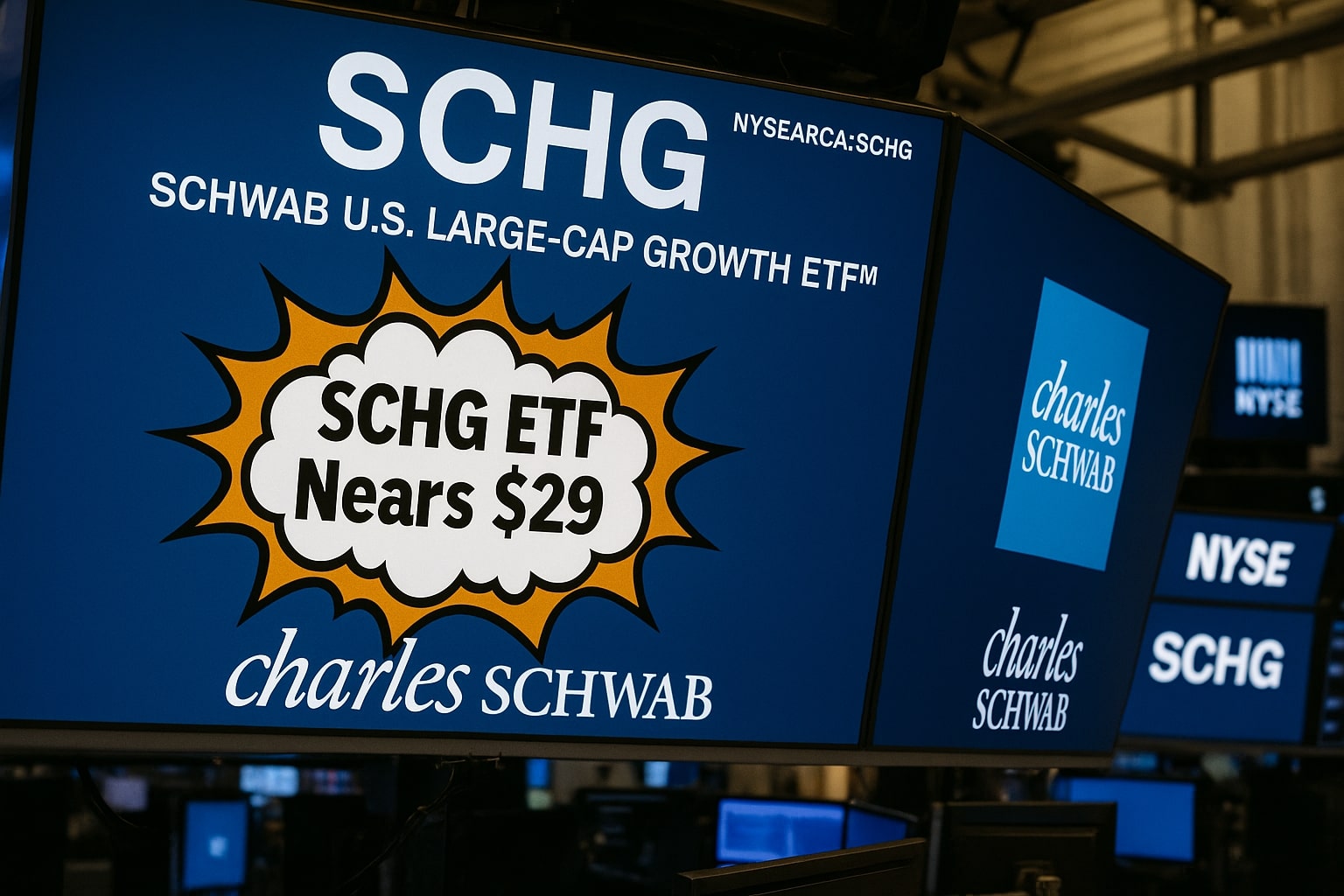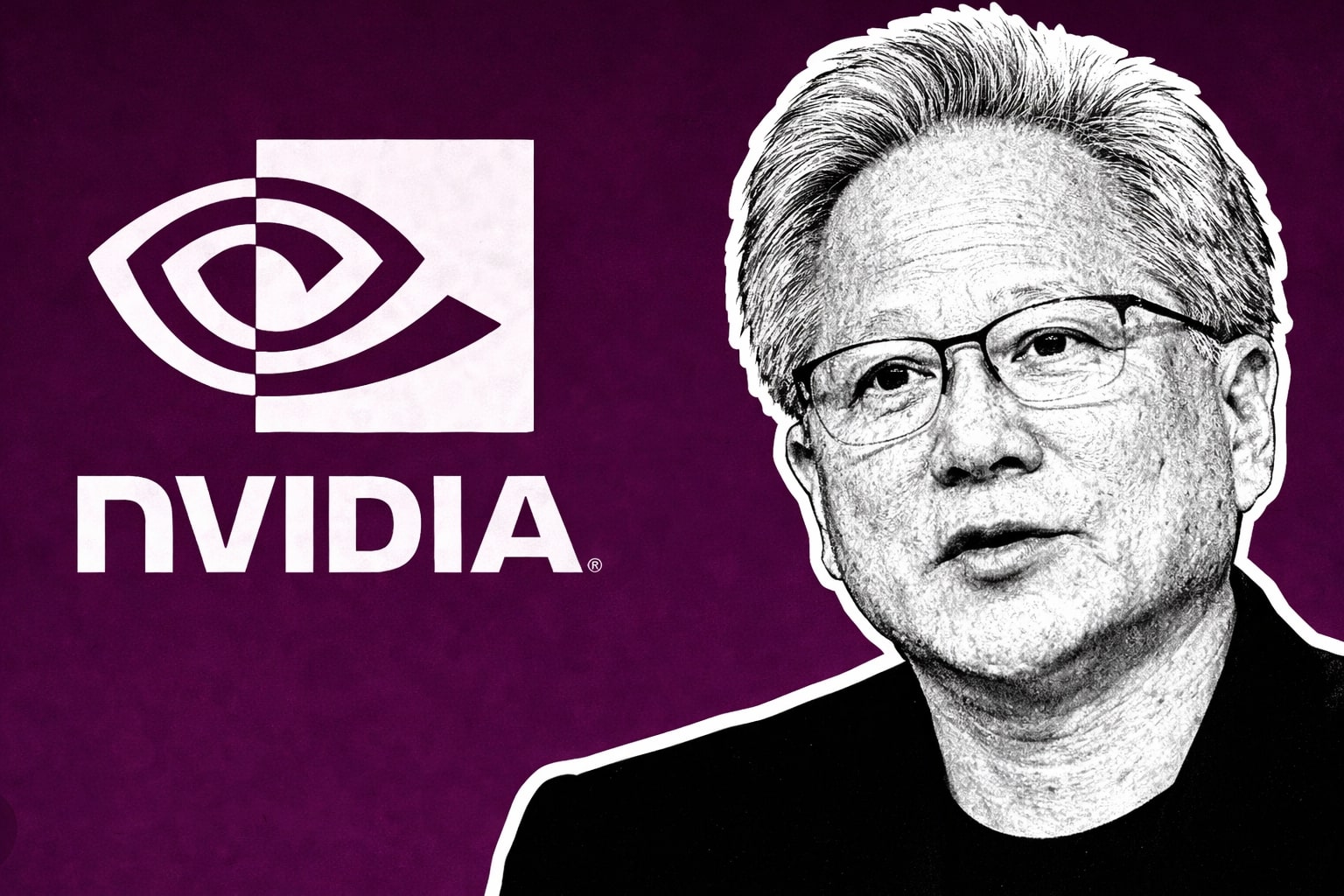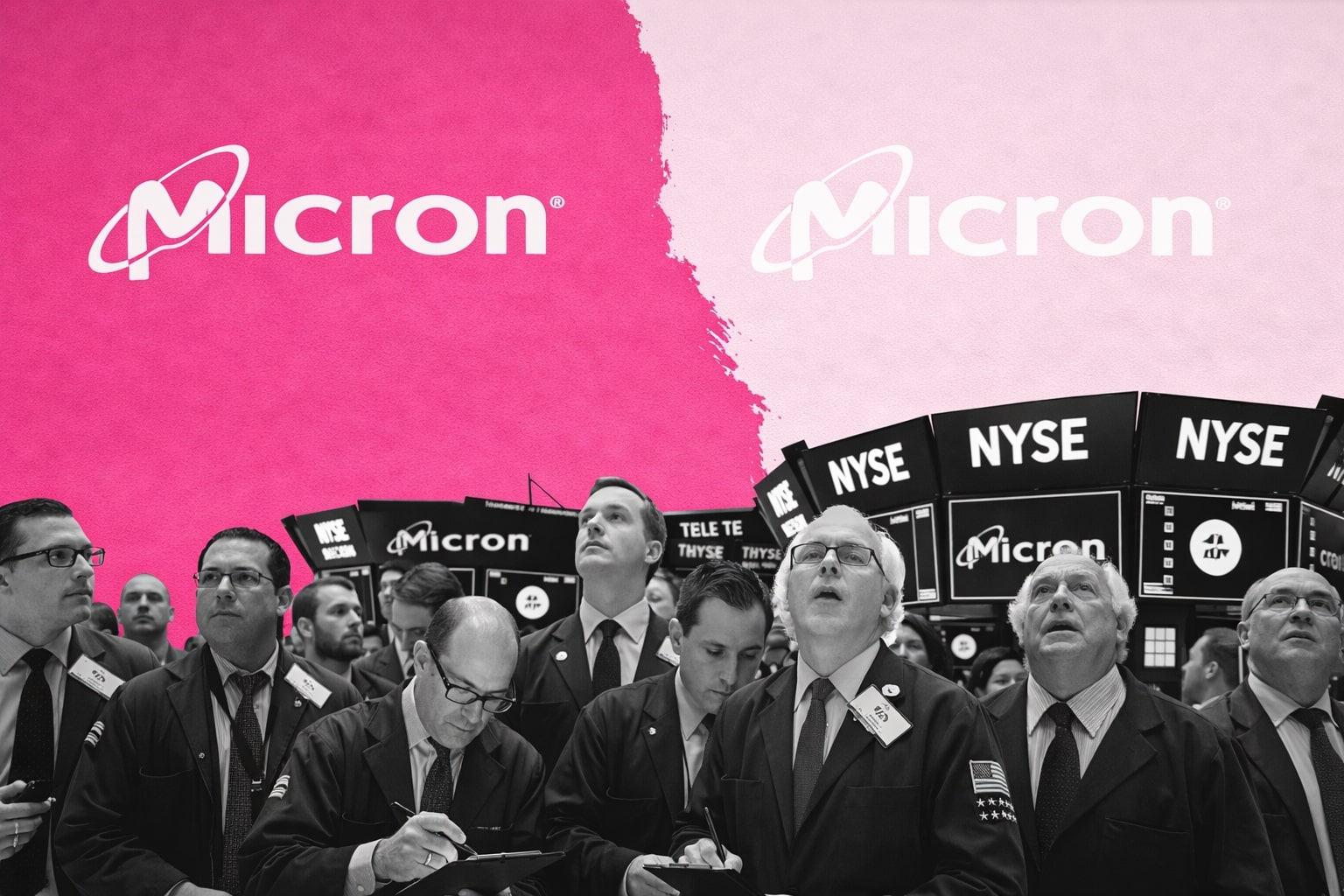
SCHG ETF Surges to $28.86 on Mega-Cap AI Momentum: Is Schwab’s Growth Giant the Best Tech Bet?
With $43B AUM, rising CapEx, and 46% EPS growth expected, SCHG ETF leads tech-fueled rebound—and may still be undervalued | That's TradingNEWS
Tech Megacaps, AI, and SCHG's $43B Engine of Growth
The Schwab U.S. Large-Cap Growth ETF (NYSEARCA:SCHG) has transformed into a precision instrument for capturing the acceleration of mega-cap tech and AI-led expansion. With over $43.26 billion in AUM and a razor-thin 0.04% expense ratio, SCHG offers exposure to 231 positions that concentrate powerfully in technology, semiconductors, and digital infrastructure—and has outpaced benchmarks like QQQ, VTI, and SPY over the past five years.
From February lows of $28.91, SCHG plummeted to $21.37 during the early April 2025 bear market, a drawdown of -26.08%, but staged a powerful +35.05% rally back to $28.86, nearly reclaiming its YTD high. This sharp V-shaped recovery, fueled by tech-driven capital expenditure (CapEx) expansion, is not just cyclical rebound—it reflects a structural shift in where the next decade's growth will come from.
The CapEx Supercycle: Fueling SCHG Through $331 Billion in Spending
SCHG's portfolio tilts heavily toward firms like Microsoft (MSFT), Apple (AAPL), NVIDIA (NVDA), Meta (META), Alphabet (GOOGL), and Amazon (AMZN)—the corporate epicenter of AI and hyperscaler infrastructure. In 2024, these companies collectively spent $217.27 billion in CapEx, up 55.04% year-over-year. For 2025, the projected CapEx jumps again by 52.35% to $331 billion. These outlays are not vanity investments—they are tied to cloud data centers, generative AI model scaling, and semiconductors.
Names like Broadcom (AVGO), Taiwan Semiconductor (TSM), Qualcomm (QCOM), and Micron (MU) are direct beneficiaries, helping drive $287.43 billion in YoY revenue growth across the sector. SCHG's index methodology captures these compounders early through momentum and earnings revisions. It doesn’t simply follow tech—it tracks the CapEx gravity in real time.
Valuation Compression with Earnings Momentum: SCHG’s Forward EPS Power
SCHG trades with its top holdings at a blended 48.19x 2025 earnings, dropping to 30.23x 2027 earnings. Excluding Tesla (TSLA), a multiple outlier at 86.67x, the top holdings re-rate to 32.49x 2025 and 23.17x 2027. Simultaneously, the group is expected to deliver $4.44 in EPS growth, a 46.27% expansion in just 24 months. This forward visibility de-risks valuation and enables high-duration investors to price in aggressive compounding.
With a fair value convergence ahead, SCHG offers a rare blend: premium growth with falling PEG ratios. It is tracking not just momentum but fiscal discipline in its underlying names, many of which are reducing share dilution, accelerating buybacks, and issuing less debt due to free cash flow growth.
VUG vs SCHG: Broader Breadth, Sharper Beta, Lower Concentration
Compared to Vanguard’s VUG, SCHG offers a broader portfolio with over 240 holdings vs VUG’s ~169, a lighter mega-cap concentration, and a different index methodology (Dow Jones vs CRSP). The result is adaptive style-scoring that tilts into fast-growing names like UnitedHealth (UNH) and IBM, often excluded from stricter growth-factor screens.
Even small differentials have produced alpha. Over five years, $10,000 in SCHG grew faster than in VUG. In the 2022-23 correction and the 2024 bull rebound, SCHG outperformed in both directions. Sectorally, SCHG holds a more balanced exposure with 16% in industrials and healthcare, adding resilience during tech pullbacks.
Tech Concentration Risk or Strategic Leverage?
While over 30% of SCHG’s weight is in MSFT, AAPL, and NVDA, this is not reckless concentration—it reflects strategic positioning in firms driving productivity growth for the global economy. These firms are becoming public utilities of the AI era. Investors worried about regulatory overhangs or rate risk should note that SCHG's methodology rebalances quarterly, reducing overweight exposure organically.
Further, SCHG’s tech bias is counterbalanced by its inclusion of defensive growth in healthcare and industrials. During rate spikes or macro shocks, SCHG has historically weathered better than tech-only ETFs while capturing most of the upside in rallies.
Structural Tailwinds: From AI Chips to Style Momentum
The AI chip market, including DRAM and Flash ROM, is projected to surge to $240.66 billion by 2030, doubling from $111.62 billion in 2023. SCHG captures the upstream and downstream spectrum of this value chain. With CapEx from hyperscalers translating into revenue for chipmakers and infrastructure providers, SCHG investors are exposed to every node of the innovation cycle.
SCHG’s style-ranking methodology, focused on relative growth, valuation efficiency, and forward earnings momentum, positions it to overweight precisely those stocks gaining EPS revisions and institutional flows. Passive in form, but aggressive in composition, SCHG is an AI-driven cycle tracker in ETF clothing.
ETF Structure, Trading, and Cost Advantages
SCHG trades at tight spreads, with $43.26B in AUM, and an expense ratio of just 0.04%—placing it among the most cost-effective large-cap growth vehicles. While liquidity is marginally lower than VUG, the savings on fees and broader exposure balance that out for long-term holders. Investors are essentially paying four basis points to access tech + AI + innovation-cycle leverage in one wrapper.
The ETF allows up to 10% in non-index securities and derivatives for tracking optimization. It also has discretion to pre-adjust portfolios ahead of index rebalancing, creating alpha not usually seen in passive funds. This embedded flexibility has been key to its outperformance during volatile macro phases.
Link to Real-Time Chart and Tracking Resources
Check the real-time chart and latest trading data for NYSEARCA:SCHG
SCHG Schwab U.S. Large-Cap Growth ETF Buy, Sell or Hold?
With a post-bear-market rebound of +35%, forward EPS visibility above 46%, CapEx surging toward $331B, and SCHG trading at just 0.04% fees, this ETF offers structurally advantaged exposure to the backbone of future U.S. productivity. The data confirms SCHG’s forward dominance among growth ETFs. Investors seeking long-duration exposure to mega-cap innovation cycles, AI, cloud infrastructure, and semiconductors are unlikely to find a more efficient vehicle. The rating is Strong Buy on all dips below $28, with upside toward $32 by year-end if macro stability persists and Q2 tech earnings deliver as expected.
That's TradingNEWS
Read More
-
PYPL Stock Price Forecast - PYPL at $59.91; Is It a Bargain or Value Trap?
18.12.2025 · TradingNEWS ArchiveStocks
-
Ethereum Price Forecast - ETH-USD Slides to the $2,800s as ETF Outflows Mount and a $2,000 Flush Looms
18.12.2025 · TradingNEWS ArchiveCrypto
-
Oil Price Forecast - Oil Stalled Near $56–$60 as Venezuela Blockade Clashes With Oversupply Outlook
18.12.2025 · TradingNEWS ArchiveCommodities
-
Stock Market Today: Nasdaq, S&P 500 And Dow Jump As CPI Cools And MU Stock Rockets
18.12.2025 · TradingNEWS ArchiveMarkets
-
GBP/USD Price Forecast - Pound Holds 1.34 as BoE’s 3.75% Rate and Weak US CPI Pressure the Dollar
18.12.2025 · TradingNEWS ArchiveForex


















